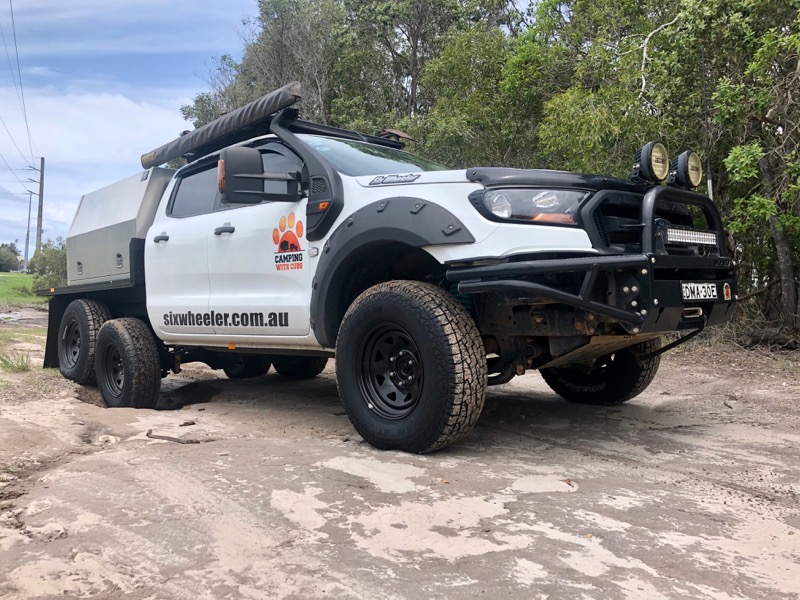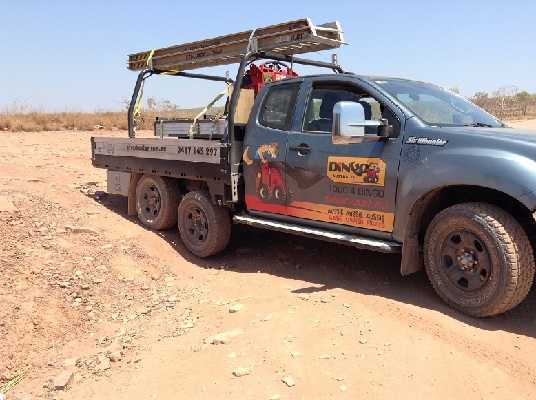How Does A Six Wheeler Work?
All 6 Wheelers & lazy axle set ups are NOT created equal
Our unique rear lazy axle suspension system has a 60 : 40 load share, whereby 60-65% of the load remains on the drive axle in most situations (leaving 40% on the lazy axle).
This, combined with up to 300mm of articulation between those two rear axles, enables our Six Wheelers to typically go where any standard 4 wheeler vehicle will travel both on and off road. Our Six Wheelers can keep up with their unmodified 4 wheeler counterparts in most situations when empty, but when loaded the Six Wheeler will greatly out-perform the 4 wheeler, particularly in sand.
This is due to stability, weight distribution and floatation.
Why not a 6x6?
Simply put, a 6 wheel drive vehicle just isn’t very practical in the real world.
6x6 systems have a lot of moving parts and a lot of disadvantages. More moving parts = much higher purchase price and maintenance costs. Their higher tare weight (about 300-400kg) means reduced payload on a car licence. Equal load share between rear axles and 4 wheels pushing can make them harder to steer off-road (especially in the wet) and very hard on tyres, all adding to ongoing costs. But if your new vehicle will spend most of its life in rugged off road environments then a 6X6 may be for you, and we can put you in touch with some 6x6 installers who specialise in these vehicles.
But lazy axle trucks get stuck going up driveways so why won't yours??
A truck suspension system is designed to carry load, so both the driven and lazy axle share the load equally. The suspension is usually very stiff with no articulation between the axles, so if the drive axle is lifted ever so slightly, it will spin and lose traction. Our six wheeler articulates between the 2 axles, so when the lazy axle is up it forces the other one down, helping us keep traction in most situations so we don't get stuck like the trucks do.



